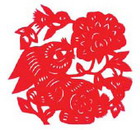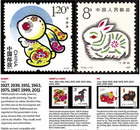Books
Revealing the secrets of Xinjiang relics
By Guo Shuhan (China Daily)
Updated: 2011-02-16 10:44
 |
Large Medium Small |
 |
|
The Biography of Xuanzang in Uygur Script. [China Daily] |
An exhibition of rare books, documents and currency, excavated in Xinjiang Uygur autonomous region, is now on display at the National Library of China.
With its 320 items drawn from 22 institutes, it is reportedly the first comprehensive exhibition of its kind in the capital since 1949 and will last two months.
A smaller exhibition held in the Xinjiang Uygur Autonomous Region Museum in Xinjiang's capital Urumqi from August to October 2010 drew more than 100,000 people.
Part of the area known as xiyu, or the western regions, Xinjiang has been home to numerous ethnic groups since ancient times. An important trading post along the Silk Road, it has remained a center of the confluence of many different cultures.
The exhibition presents the pre-Qin period (before 221BC) to the Qing Dynasty (1644-1911) in four sections.
The Shanhaijing (Mountains and Seas) segment of the pre-Qin period presents the geography of the western regions in great detail.
The letter scripts of the Sogdians and Jews, who were lured to the business opportunities of the Tang Dynasty (AD 618-907), reflect the historical status of the area as a bridge between the West and the East.
The colorful edition of the Atlas of the Western Regions, or Xiyu Yutu, done in the traditional landscape drawing style of the Qing Dynasty, gives detailed geographical details from Jiayuguan Pass in Gansu province to today's Pamirs.
The exhibits come in 22 languages, some of which were used by ancient ethnic groups and have since vanished. The Kharosthi script, for instance, was used before the 3rd century, while Kuchean, a branch of the Tocharian language, was used before the 9th century.
A few of the documents will be presented in two languages. For example, a Kuchean version of A Script on Stories of Maitreya, or Mile Huijian Ji, written between the 7th and 8th centuries will be displayed along with a Uygur version completed two centuries later.
Systematic preservation of historical documents in Xinjiang began in the 1950s. Over the past three decades, the Annotated Bibliography of Literature on Xinjiang Ethnic Groups and some ancient books found in the region have been published or reprinted.
Since 2007, the China National Preservation and Conservation Center for Ancient Books has invited researchers from Xinjiang to attend its annual training on preserving ancient documents.
In 2010, conservation work in Xinjiang became part of the national Ancient Books Conservation Project, which was launched in 2007.
The crude facility is a challenge for preserving decayed books, says Chen Hongyan, deputy of the library of ancient books. Chen says the majority of books in Urumqi, let alone other cities and counties, have no suitable bookshelves and bookcases.
Visitors to the exhibition can contribute to the preservation efforts by donating 100 yuan ($15.2) for a paper bookcase.










